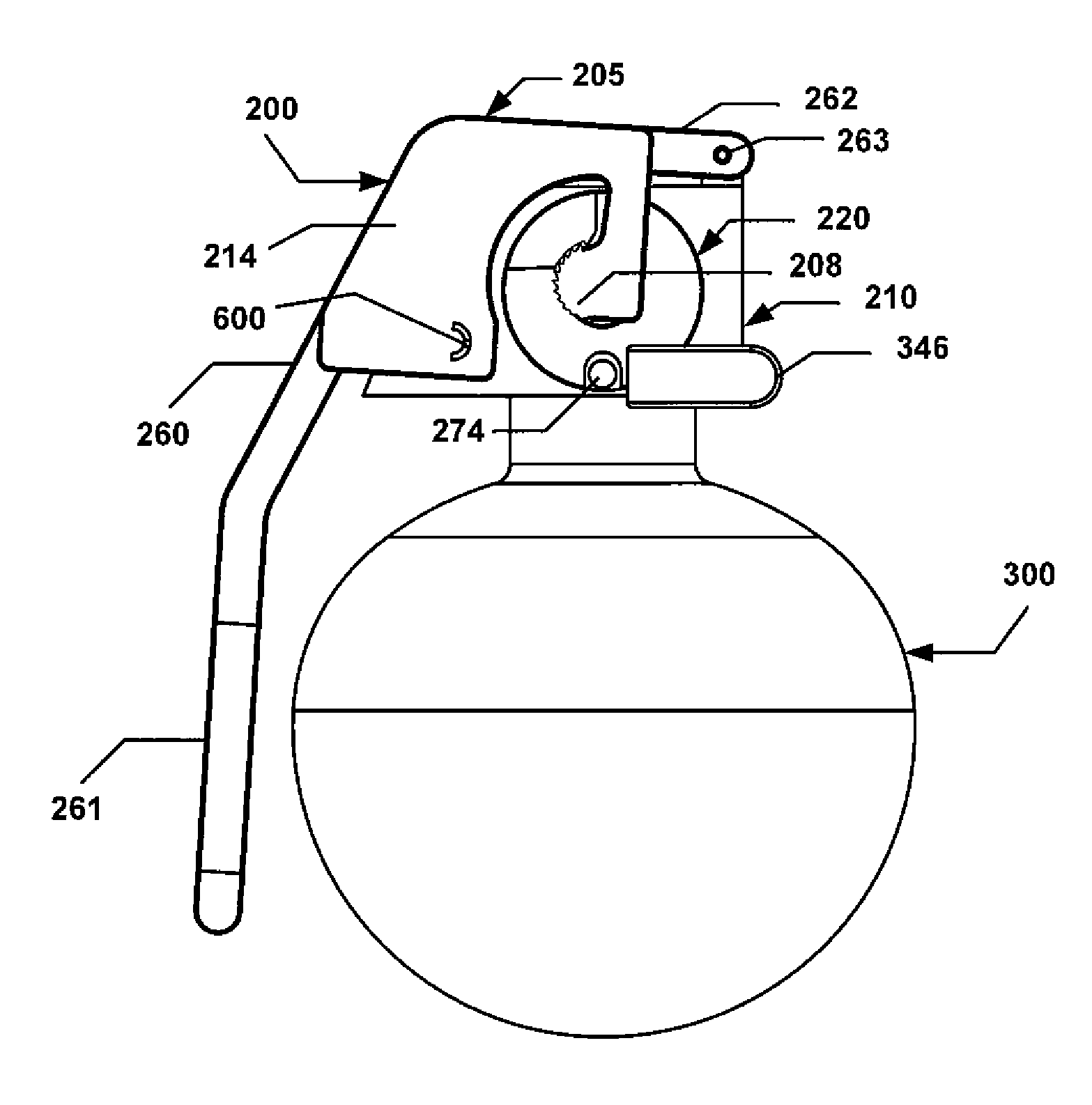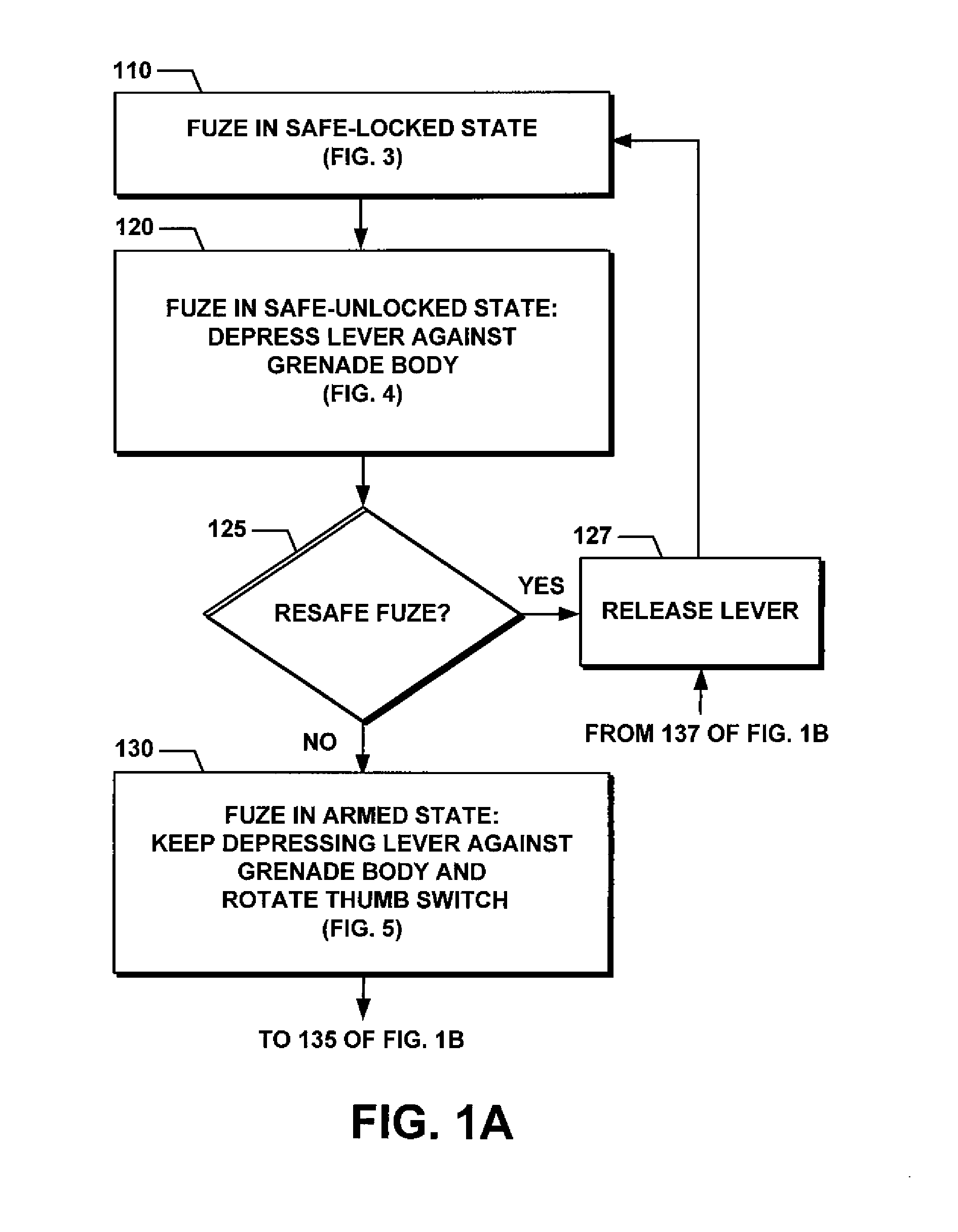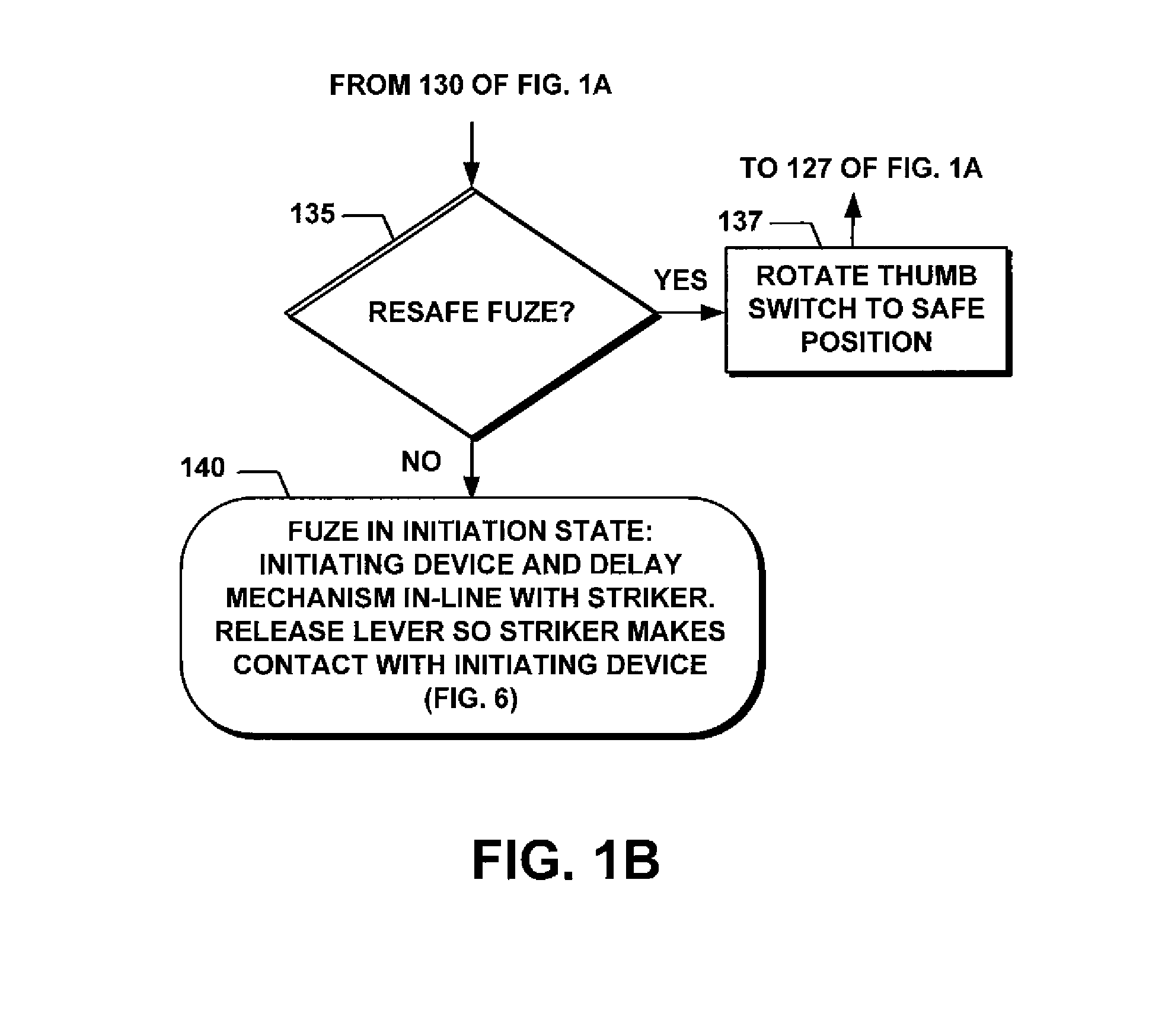Rotating thumb safety fuze for a hand grenade and related methods of operation and assembly
- Summary
- Abstract
- Description
- Claims
- Application Information
AI Technical Summary
Benefits of technology
Problems solved by technology
Method used
Image
Examples
Embodiment Construction
[0046]A safety fuze 200 of the present invention and its method of operation will now be described with reference to FIGS. 1 and 2. The safety fuze 200 generally includes a lever 205, a body 210, a striker assembly 279, and a rotating thumb switch assembly 350.
[0047]The general operation 100 of the safety fuze 200 involves four distinct stages. In the first operation stage, the safety fuze 200 is in a safe-locked state, as shown in step 110 of FIG. 1A. As used herein, the terms “state,”“position,” or “stage” are used interchangeably. In this state, the lever 205 is locked in place by the rotating thumb switch assembly 350. In turn, the lever 205 holds back the striker assembly 279 under spring tension.
[0048]The lever 205 is held at a distance from the body 210 and prevented from rotation (e.g., FIG. 3A). In this safe-locked state, the rotating switch assembly 350 contains an initiation and / or delay device 355 (shown in dashed line in FIG. 3D), and is rotated 90 degrees away from a p...
PUM
 Login to View More
Login to View More Abstract
Description
Claims
Application Information
 Login to View More
Login to View More - R&D
- Intellectual Property
- Life Sciences
- Materials
- Tech Scout
- Unparalleled Data Quality
- Higher Quality Content
- 60% Fewer Hallucinations
Browse by: Latest US Patents, China's latest patents, Technical Efficacy Thesaurus, Application Domain, Technology Topic, Popular Technical Reports.
© 2025 PatSnap. All rights reserved.Legal|Privacy policy|Modern Slavery Act Transparency Statement|Sitemap|About US| Contact US: help@patsnap.com



